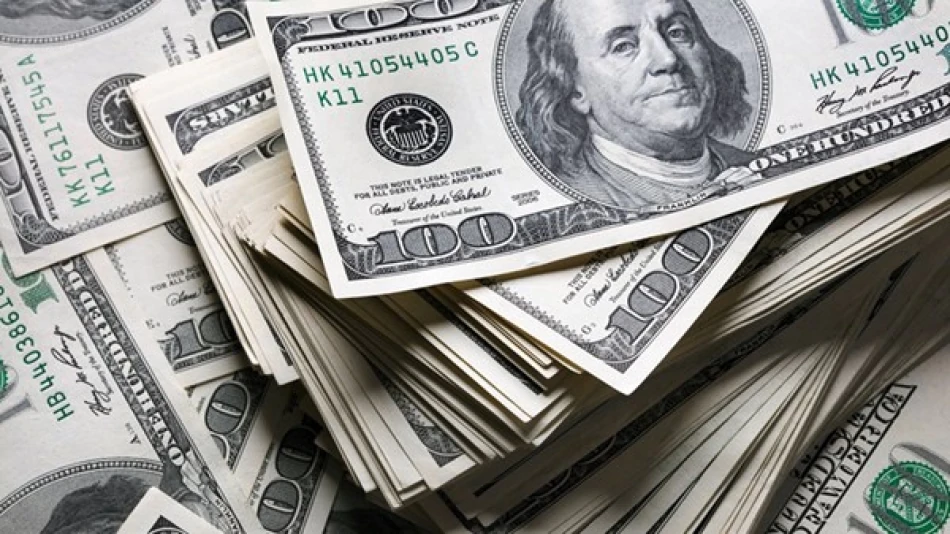
US Tariffs Boost Dollar Amid Escalating Trade Tensions
Dollar Surges to Best Weekly Performance in Three Years as Trump's Tariff Blitz Reshapes Global Currency Markets
The U.S. dollar is on track for its strongest weekly performance in nearly three years, powered by President Donald Trump's aggressive new tariff announcements targeting dozens of trading partners. The greenback's rally reflects a fundamental shift in global trade dynamics, with currency markets pricing in the inflationary impact of protectionist policies while other central banks signal dovish stances.
Tariff Strategy Drives Dollar Dominance
Trump's escalating tariff regime has created a perfect storm for dollar strength. The Dollar Index, which measures the currency against six major peers, is set to rise 2.4% this week—the best performance since a 3.1% surge in September 2022. The index climbed to 100.14 on Friday, hitting its highest level since May 29.
This tariff-driven rally differs markedly from previous dollar strength cycles. Unlike traditional safe-haven flows during geopolitical crises, this surge stems from expectations that import taxes will boost domestic inflation, potentially forcing the Federal Reserve to maintain higher interest rates longer than other central banks.
Targeted Currencies Bear the Brunt
Countries facing steeper tariffs saw their currencies hit hardest. Canada's dollar fell 0.12% to 1.3872 against the greenback, reaching its weakest level since May 22, after Trump imposed a 35% tariff—higher than the previously threatened 25%. Switzerland's franc dropped 0.26% to 0.8120 per dollar following a 39% tariff announcement, up from an earlier 31% suggestion.
These targeted strikes demonstrate how currency markets now view tariffs as precision weapons rather than broad-based trade tools. The differential impact suggests investors are pricing in long-term structural changes to trade relationships rather than temporary policy adjustments.
Asian Markets in Retreat
Asian emerging market currencies faced widespread selling pressure as tariff contagion spread across the region. The Philippine peso tumbled to a six-month low, while Taiwan's dollar hit its weakest level since early June. South Korea's won dropped to levels unseen since mid-May.
This broad-based Asian weakness reflects the region's heavy reliance on export-driven growth models. Unlike previous trade disputes that primarily affected bilateral relationships, Trump's comprehensive tariff approach threatens to reshape entire supply chains, forcing Asian economies to recalibrate their currency and monetary policies.
Euro Under Pressure from "Unbalanced" Trade Deal
The euro remained near two-month lows around $1.1428, weighed down by what markets perceive as an unfavorable trade framework agreement with Washington. The single currency hasn't strayed far from Wednesday's $1.1401 level—its weakest since June 10.
"The standout event this week is the downward revaluation of the euro," said Mike Hollahan, director at Electus Financial in Auckland. "The bottom line is that the EU-US trade agreement poses an additional headwind for the euro."
The framework deal, struck last Sunday, quickly drew criticism from French leaders and the European Parliament's trade committee chairman as unfair to Europe. This immediate political backlash suggests the agreement may face implementation challenges, creating prolonged uncertainty for the euro.
Yen Weakness Amplifies Dollar Gains
The Japanese yen's decline to four-month lows provided additional fuel for dollar strength. The yen traded at 150.46 per dollar in latest dealings, after touching 150.915 earlier Friday—its weakest since March 28.
The Bank of Japan's Thursday signal that it's in no rush to resume interest rate hikes created a stark policy divergence with the Federal Reserve. This contrast highlights how Trump's policies are forcing global central banks into defensive positions, with the Fed likely to maintain hawkish rhetoric while others turn dovish to protect their economies from tariff impacts.
Fed Independence Tested but Dollar Resilient
Despite Trump's continued attacks on Fed Chair Jerome Powell and calls for significant rate cuts, the dollar maintained its strength. The central bank ignored this pressure Wednesday by keeping policy unchanged, citing "slight increases" in inflation and labor market "strength."
This resilience suggests markets now view Fed independence as more robust than previously feared. The central bank's ability to resist political pressure while maintaining credible monetary policy creates an additional premium for dollar assets.
Market Implications and Outlook
Friday's U.S. jobs data will provide crucial insight into whether the labor market can sustain the dollar's rally. Economists expect job growth to slow to 110,000 in July from 147,000 the previous month—a notable deceleration but not alarming enough to derail the currency's momentum.
The dollar's surge represents more than a typical policy response cycle. Trump's comprehensive tariff strategy is forcing a fundamental repricing of global trade relationships, with currency markets anticipating prolonged dollar strength as other economies adapt to higher trade barriers. For investors, this creates opportunities in dollar-denominated assets while raising hedging costs for international exposure.
 Layla Al Mansoori
Layla Al Mansoori







